Agrigento
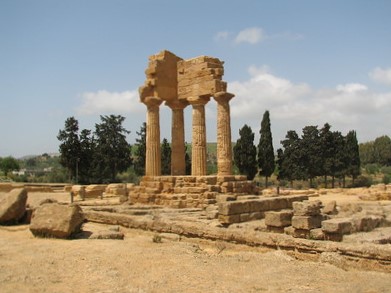
The Archaeological Area of Agrigento is known for its Greek architecture.
The site is a testament to a Greek colony that flourished here from the 6th century BCE. It comprises the remains of the acropolis and the sacred hill. The latter was adorned by numerous magnificent Doric temples, which have been preserved in good condition.
Community Perspective: The temple of Concordia is the undoubted highlight. Be aware that this so-called ‘Valley of the Temples’ requires a non-trivial amount of walking.
Botanical Garden, Padua
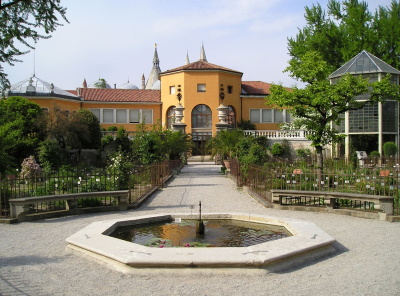
The Botanical Garden (Orto Botanico), Padua is the oldest University Botanical Garden in the world, which has kept its research and didactic features unchanged for centuries.
The Garden was established in 1545 by the University of Padua and has been a great influence on other botanical gardens around the world. At first geared toward the growth of medicinal plants, it was later enriched with plants from all over the world brought in by the Venetian Empire. The Garden houses an extensive herbarium and a scientific library.
Community Perspective: This smallish garden is a pleasant and quiet oasis in the city center, with the 'Goethe palm' from 1585 as its "star". There’s an old and a new part, the latter with a large greenhouse housing plants from different climates.
Changdeokgung Palace Complex
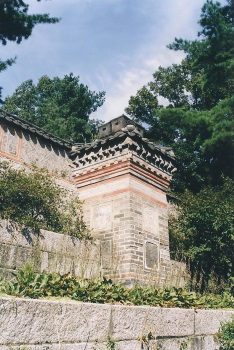
The Changdeokgung Palace Complex has been influential for its architecture and garden design.
Based on 'pungsu' (Korea's System of Geomancy or Feng Shui) and Confucian principles, the buildings are harmonized with the natural setting. This is the oldest of Seoul's Royal Palaces. Attached to the palace is the "Secret Garden", a beautiful landscape garden to be used by the Royal Family only. You can find especially imported trees, pavillions, pagodas, stone bridges and ponds.
Community Perspective: Considered one of South Korea's highlights, but also a bit sterile. Kyle addresses the authenticity questions it raises. The Secret Garden is limited to access by guided tour, which is best to reserve online a few days beforehand.
Classical Gardens of Suzhou
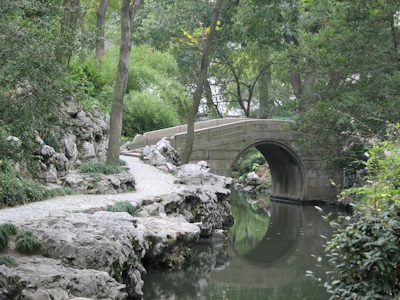
The Classical Gardens of Suzhou are the most refined representations of the art of classical Chinese garden design.
They are complex landscapes imitating natural scenery with pavilions, rocks, hills and rivers. The designs were specially adapted to the small space available in private gardens in an urban environment. The selected gardens show their evolution over time from the 11th to the 19th centuries.
Community Perspective: The Humble Administrator's Garden is considered the most beautiful, while the Lion Forest Garden certainly is the weirdest, with its ‘mountain landscape’ of Taihu rockery.
Cocos Island
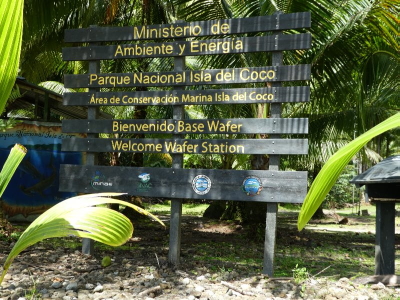
Cocos Island National Park covers a remote oceanic island primarily known for its marine ecosystem, that is globally significant for sharks.
Situated at a meeting point of major currents, marine species come here for feeding, reproduction and ‘cleaning’ (having parasites removed by specialised fish). The sharks range from the near-threatened Silky and Lemon Shark to the Hammerhead Shark; aggregations of large pelagic fish can also be seen and the area is visited by Blue Whale and Bottlenose Dolphin. The island is covered by a tropical rainforest and a cloud forest, and has three endemic bird species.
Community Perspective: it takes 36 hours of cruising on a live-aboard dive boat to reach. Zoë reports on the excellent diving, without another dive group in sight.
Costiera Amalfitana
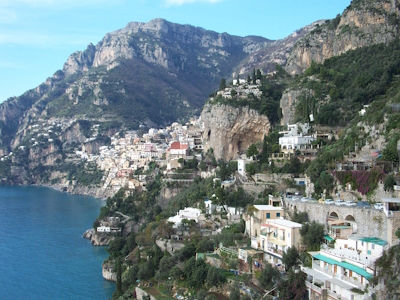
The Costiera Amalfitana is a cultural landscape shaped by its dramatic topography and the economic power of the Amalfi Sea Republic.
The steep slopes of the Monti Lattari, rising from the coast, are dotted with colourful little towns. Between 839 and around 1200, this area formed an independent republic and became an important trading power in the Mediterranean. From this period, numerous examples of art and architecture remain, some in the “Arabic-Norman” style.
Community Perspective: “There are two things to remember about the Amalfi Coast: the first is its beauty and the second is the harrowing journey it takes to get there.” Try to avoid it during the peak summer months.
Dougga/Thugga
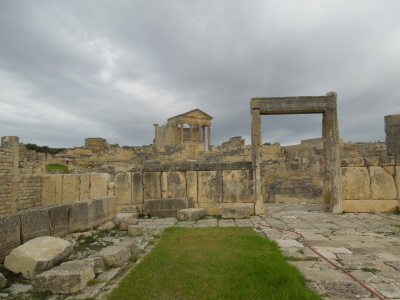
Dougga/Thugga includes the archeological site of a small Roman provincial town and what was, probably, the first capital of the Numidian kingdom.
The Roman public and religious buildings were integrated with the old Numidian city. They deviated from the classic "blueprints" to take account of the local uneven terrain. Due to its remoteness and diminished importance since Byzantine times, the city is very well preserved. Epigraphs found at the site have made a decisive contribution to the decipherment of the Libyan language.
Community Perspective: it’s a vast site (allow 3 hours) with a number of almost entirely intact buildings, which has resulted in glowing reviews.
Euphrasian Basilica in Porec
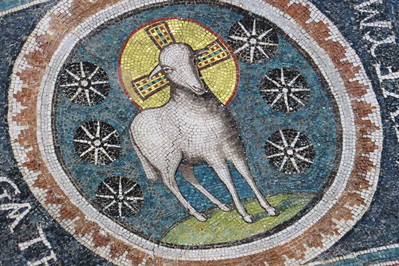
The Episcopal Complex of the Euphrasian Basilica in the Historic Centre of Poreč is one of the best examples of early Byzantine architecture.
The basilica was built in 553 under the bishop Euphrasius on the site of the older basilica that had become dilapidated. All basic components such as the church, memorial chapel, atrium, baptistery, and episcopal palace have been preserved, but have undergone changes over time. The wall mosaics were executed by Byzantian masters and the floor mosaics by local experts.
Community Perspective: The attention of the visitor is mainly drawn to its mosaic-decorated apse - Ravenna-esque but not as good.
Fortified City of Carcassonne
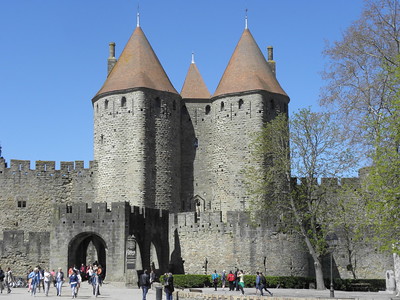
The Historic Fortified City of Carcassonne is a medieval town whose structure has evolved since the Late Roman period.
The site consists of 3km long fortifications in two lines of walls, which enclose the castle, medieval town and cathedral. The fortress was thoroughly restored from 1853-1909 by the theorist and architect Eugène Viollet-le-Duc. His work had a profound influence on subsequent developments in conservation principles and practice, although his work on Carcassonne has been controversial for not being overly authentic.
Community Perspective: The fortifications are the city’s main strength: “The sight of.. all those turrets and towers (45 of them) is surely one to behold”. But it’s also an empty shell and a tourist trap, some even call it a “A pseudo mediaeval theme park”. At least visit out of season as it can be heaving with people in the summer months.
Hallstatt-Dachstein
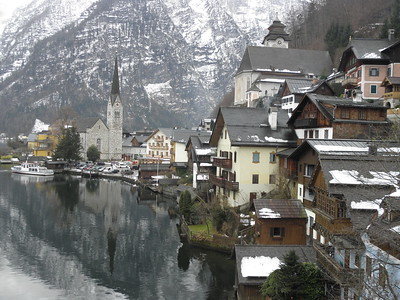
The Hallstatt-Dachstein Salzkammergut Cultural Landscape is a beautiful Alpine landscape where salt production brought great prosperity.
Its name is forever linked to European prehistory for the discovery of late Bronze Age and early Iron Age remains, which became the type site for the Halstatt culture. In addition to the salt mining town of Hallstatt, the landscape also includes the Halstätter Lake, the Dachstein massif, the town of Obertraun and the surrounding areas.
Community Perspective: one of the Alps' most stunning vistas, there possibly isn’t a place anywhere quite as picture-perfect as Hallstatt. It’s a bit of a mystery why it was nominated only as a cultural landscape because its natural properties are at least as important. Read Hubert’s review for tips on the natural side.
Heard and McDonald Islands

Heard Island and McDonald Islands are uninhabited, barren islands located in the Southern Ocean, with a complete absence of alien plants and animals, as well as human impact.
The islands have been territories of Australia since 1947, and contain the only two active volcanoes in Australian territory, one of which, Mawson Peak, is the highest Australian mountain. The volcanoes are covered by snow and glaciers. The islands furthermore see major breeding populations of seals, petrels, albatrosses and penguins.
Community Perspective: this site has been unreviewed so far.
Hospicio Cabañas
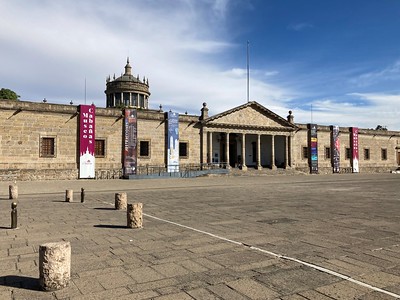
Hospicio Cabañas was an institution for the poor, the sick, and the elderly in the Mexican city of Guadalajara.
It was founded by Franciscan friars in 1821 as one of the first of its kind in the New World. The building was specifically designed by Manuel Tolsá, a renowned architect from Mexico City, for this purpose: it is single-storey and has wide open spaces to provide air and light. A monumental series of murals by the Mexican artist Orozco were added to its chapel in the 1930s.
Community Perspective: An impressively sized building, but most of the attention goes out to the murals. Be sure to participate in a guided tour (which comes free with your entrance ticket nowadays) or download an audio guide to better understand them.
Hwaseong Fortress
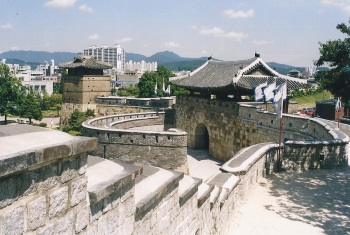
Hwaseong Fortress is a highlight in 18th-century military architecture as it combines features from the East and West.
The fortress had defensive, administrative and commercial functions. The piled-stone and brick construction had a profound influence on urban planning, landscaping and architecture in Korea. It has four impressive main gates at the cardinal points.
Community Perspective: This is an easy day trip from Seoul, as it is accessible by metro about an hour away in Suwon. The 5.7km long circular wall still is pretty intact and can be entirely walked. Along the way, you will encounter some of its special defense structures. Inside the walls, you can visit the reconstructed Hwaseong Haenggung Palace.
Kinderdijk
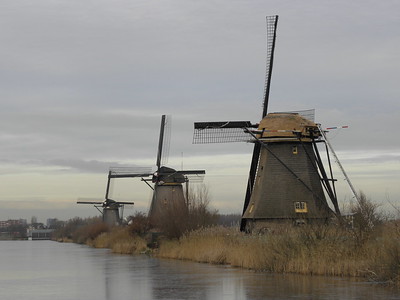
The Mill Network at Kinderdijk-Elshout is a complex system of hydraulic works set up for drainage and protection against the inundation of the polder.
The system consists of windmills, pumping stations, sluices and Water Board Assembly Houses. The 19 windmills, built around 1740, are well-preserved and in working condition. The drainage techniques used here have been influential in many parts of the world.
Community Perspective: the walk along this row of iconic windmills is an easy stroll that can be done in every season. Some can be entered as well and have a small exhibition or show their use.
Lake Turkana
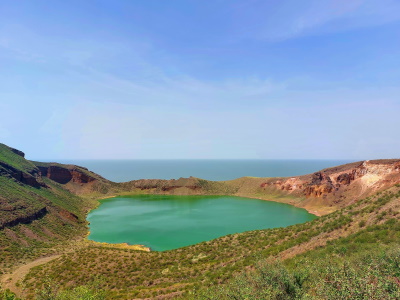
The Lake Turkana National Parks provide an important stopping point for migratory birds and holds fossil and geological records that have brought an understanding of its paleo-environment.
The parks consist of Sibiloi National Park and two islands on Lake Turkana (South Island and Central Island). They contain both animal and hominid fossils in the Koobi Fora deposits which are unique in the world. The parks also are a breeding ground for the Nile crocodile, hippopotamus, and snakes.
Community Perspective: more romantically known as the Jade Sea, the area is characterized by a constant fight for survival against drought and starvation.
Las Medulas
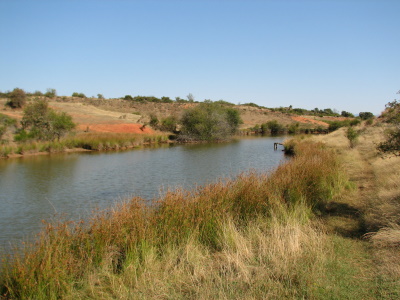
Las Médulas is a landscape shaped by Roman gold mining.
The Romans started exploiting the Iberian colony's resources in the second half of the first century CE. Las Médulas was their largest gold mine. The mining was done by hydraulic power that blasted the rocks away. To be able to generate enough water power, the Roman army constructed roads, dams, and canals.
Community Perspective: The classic red peak views can be had from the Mirador de Orellana. Nearby are the Galerias de Orellan, Roman tunnels, which can be visited underground. The rustic town of Las Médulas caters to tourists and there are guided tours on offer as well as hiking trails, places to stay and eat etc.
Lumbini
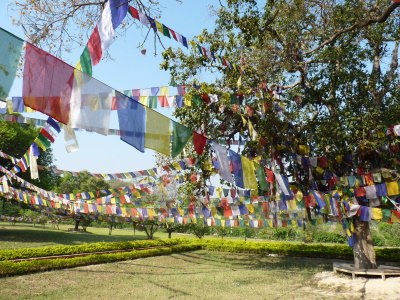
Lumbini, the Birthplace of the Lord Buddha, is the most holy Buddhist religious site.
The archaeological site shows evidence of its long existence as a pilgrimage center, in the form of monasteries and stupas that were erected early on. An inscription on the so-called Ashoka pillar (dating from 249 BCE) identifies the place as the birthplace of the Buddha several centuries earlier - the exact year of his birth is strongly disputed.
Community Perspective: Lumbini lies in the plains of the Terai, where between June and October it can become very hot. The original site is calm and quiet, in a rural setting. It is surrounded by modern temples and monasteries that were constructed as part of the late 20th-century ‘Lumbini Master Plan’ by Kenzo Tange. While most reviewers find a visit spiritual or at least serene, Zoë wonders why the site has been inscribed at all.
Macquarie Island

Macquarie Island holds a remote, windswept landscape that is the only place on Earth where rocks from the Earth's mantle are actively exposed above sea level.
The active tectonic processes make it an important focus of geological study. The island and associated islets lie about halfway between Australia and Antarctica and are populated by huge congregations of penguins and seals. Over 850,000 Royal Penguins breed here yearly.
Community Perspective: this site has been unreviewed so far.
Malbork Castle
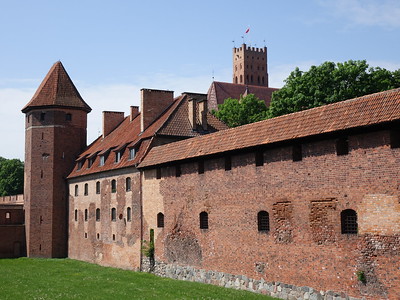
The Castle of the Teutonic Order in Malbork is a medieval Gothic castle complex built by the Teutonic Knights.
Malbork Castle was founded by the Teutonic Order after the conquest of Old Prussia and became a manifestation of the Crusades in Eastern Europe. From 1309 it was the Order's headquarters. Its Gothic brick design shows an independently evolved style. Following major damage during World War II, Malbork Castle was extensively restored and became a historic monument to conservation itself.
Community Perspective: a very impressive castle with an intriguing history, and unlike other castles here it is worth it to see the interior. Audio guides are available but they are way too detailed. Malbork is an easy daytrip from Gdansk. See Nan’s review for some additional Prussian history.
Maritime Greenwich
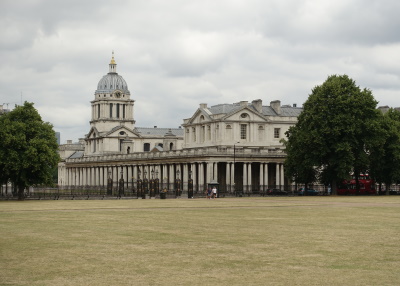
Maritime Greenwich is renowned for its architecture and role in the science of navigation and astronomy.
Many of its buildings are by the greatest British architects of the 17th and 18th centuries such as Inigo Jones and Christopher Wren. They include the Old Royal Naval College, the Queen's House, National Maritime Museum and Royal Observatory, Greenwich Royal Park, the Ranger's House and the historic town centre. At the Royal Observatory, the world standards Greenwich Meridian and Greenwich Mean Time were developed.
Community Perspective: The Old Royal Naval College has its highlight in the Painted Hall which features the finest Baroque decorative paintings in Britain. The museum at the Royal Observatory and the Palladian Queen’s House are also worth visiting. James has written a comprehensive overview of its main parts and their history.
Medina of Tétouan
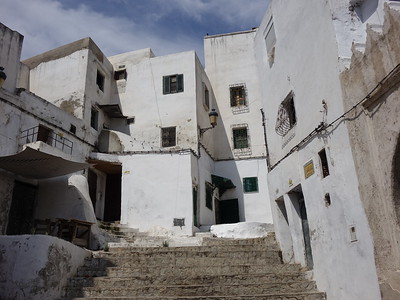
The medina of Tétouan was rebuilt by the end of the 15th century by refugees from the Reconquista when the Andalusian Moors first reared the walls and then filled the enclosure with houses.
The city is situated in the area of Morocco which was formerly ruled by Spain. Tétouan has also been home to an important Sephardi Jewish community, which immigrated from Spain. Many of the houses belonging to aristocratic families, descendants of those expelled from Al-Andalus by the Spanish Reconquista, have Hispano-Moresque decorative designs.
Community Perspective: A pleasant, authentic but tourist-friendly medina without lavish or iconic sights. It can be visited as a day trip from Algeciras (Spain).
Modena

The Cathedral, Torre Civica and Piazza Grande in Modena are supreme examples of early Romanesque art.
These 12th-century structures are the result of the close collaboration of an architect (Lanfranco) and a sculptor (Wiligelmo). Ancient remains were reused in the rebuilding of the Cathedral. The monumental complex, which took over a century to be completed, combines religious and civic functions.
Community Perspective: The first impression of almost every reviewer is: “it’s all quite small”. But, as Michael states, size should not matter. The Cathedral stands out for its rose window, reliefs and fine sculptures, which can also be admired on the outside.
Morne Trois Pitons
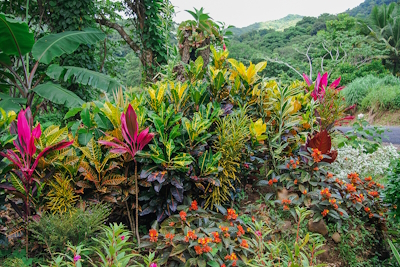
Morne Trois Pitons National Park covers a volcanic landscape that has one of the rare largely intact forest areas remaining in the Insular Caribbean.
The park is centered around the 1,342m high volcano Morne Trois Pitons ("mountain of three peaks"). Geomorphologic features as a result of a series of volcanic eruptions include the Valley of Desolation, a region of boiling mud ponds and small geysers; the Boiling Lake, Titou Gorge, and Emerald Pool. The forests are home to many endemic vascular plant species and endemic bird species.
Community Perspective: visitors recommend a tour of the breathtaking Titou Gorge, which requires a combination of hiking and swimming.
Mount Kenya
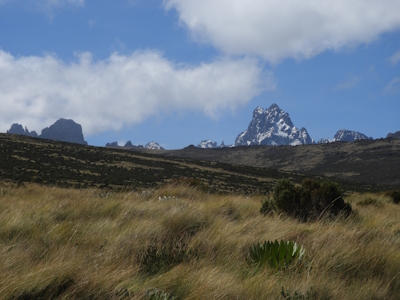
Mount Kenya National Park / Natural Forest protects the afro-alpine region surrounding Mount Kenya, the second-highest mountain in Africa at 5,199 m.
The mountain is an extinct volcano with 12 remnant glaciers on its slopes, which are retreating rapidly. Also, there are several small lakes and it is the main water catchment area for two large rivers in Kenya; the Tana and the Ewaso Ng'iso North. The site also comprises the Lewa Wildlife Conservancy and Ngare Ndare Forest Reserve in the foothills, which are within the African elephant migration route.
Community Perspective: This site requires an up-to-date review.
Old Town of Lijiang
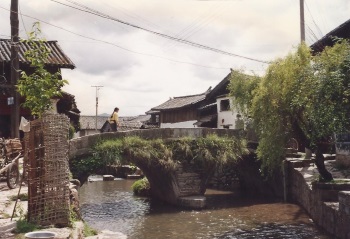
The Old Town of Lijiang represents a fusion of indigenous Naxi architecture and culture with external influences.
Lijiang has been an important regional trade center since the 12th century. The town plan is characterized by canals and bridges, while in its architecture the two-storey buildings and wooden carvings stand out. Lijiang also has an ingenious ancient network of waterways, that is supplied by the mountain springs and via Heilong Pool is connected with canals to the houses in town.
Community Perspective: “One of the nicest small cities in China”, with interesting architecture and the living culture of the Naxi people. Don’t be put off by the huge bar and clubbing area in the center.
Palau de la Musica Catalana & Hospital de Sant Pau
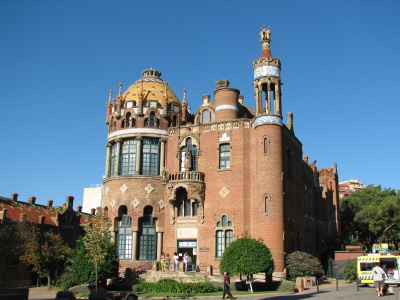
The Palau de la Música Catalana and the Hospital de Sant Pau, Barcelona are considered masterpieces of the exuberant Catalan Modernista style.
This style, similar to Art Nouveau, flowered in early 20th century Barcelona. The Concert Hall and Hospital were designed by the Catalan architect Lluís Domènech i Montaner. In both buildings, he made use of new technologies developed during the industrial revolution, such as a steel frame, and beautiful decorative motifs.
Community Perspective: The Palau can be visited on a guided tour or enjoyed during a concert, while the former Hospital grounds will need a tour too.
Panamá
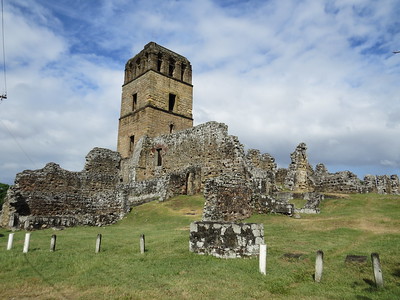
The Archaeological Site of Panamá Viejo and Historic District of Panamá represents the first European settlement on the Pacific coast of the Americas and its continuation as an important colonial city in a different location.
Panamá Viejo is an early example of colonial Spanish town planning. It was the starting point of the expeditions that conquered the Inca Empire in Peru and a stopover point of one of the most important silver and gold trade routes. The residents resettled in 1673 to the peninsula Panamá after an earthquake and a fire ravaged Panama Viejo. Its Casco Viejo features many architectural styles, from Spanish colonial buildings to French and Antillean townhouses built during the construction of the Panama Canal.
Community Perspective: The two sites lie about 11km from each other in different parts of Panama City. Solivagant has described Casco Viejo’s bad state of conservation in 2012, while Els in 2015 mentions improvements but also new threats. Overall, most reviewers find the Site of Panamá Viejo the most satisfying of the two to visit, though Ilya found Casco Viejo “pleasing to the eye”.
Ping Yao
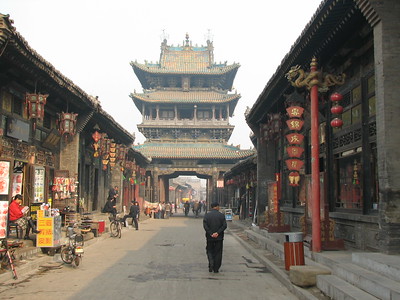
The Ancient City of Ping Yao is an integral and well-preserved Han Chinese city.
It dates from the Ming and Qing dynasties (1368-1911), and its urban plan and city walls have not significantly changed since. Its buildings show the evolution of architectural styles. Numerous impressive buildings associated with banking can be seen, as Ping Yao was a major financial centre in the 19th and early 20th centuries.
Community Perspective: It looks like a movie set (though with houses without toilets). The city wall is one of the most perfect in Asia. Visit the courtyard buildings and temples that are now in use as museums, as well as the former financial institutions.
Pompei
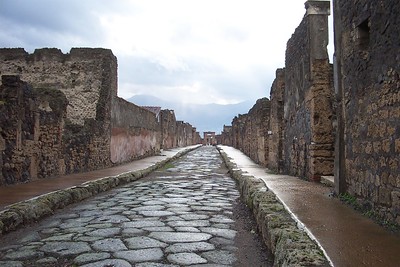
The Archaeological Areas of Pompei, Herculaneum and Torre Annunziata provide a complete and vivid picture of Roman society and daily life at a specific moment in the past.
They were all buried under layers of ash and rock when on August 24 of the year 79 CE, the Vesuvius volcano suddenly erupted. They subsequently became the best-preserved remains of the Roman period, including whole cities, suburban villas and wall paintings.
Community Perspective: “The most amazing archaeological site anywhere”. Pompei sees all the tourists and has the urban setting and the Villa dei Misteri, Ercolano is as good and easier to navigate (see review by John), while Villa di Poppea di Oplonti in Torre Annunziata (see review by Clyde) also should not be missed for its colourful frescoes.
Portovenere, Cinque Terre, and the Islands
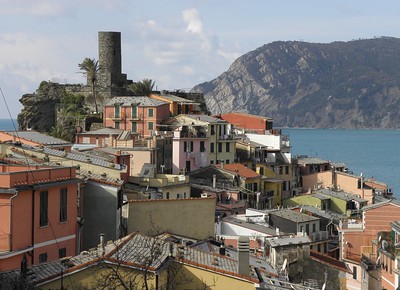
Portovenere, Cinque Terre, and the Islands (Palmaria, Tino and Tinetto) comprise a scenic cultural landscape on the steep slopes along the Ligurian coast.
Covering a stretch of 15km along the coast between Cinque Terre and Portovenere, the landscape is heavily terraced for agriculture (vines, olive trees). Until the 1870s it was only accessible by sea. Local communities lived in compact settlements, which can still be seen in the layout of the main coastal villages. The three islands of Palmaria, Tino and Tinetto contain remains of early monasteries.
Community Perspective: Cinque Terre can be well-visited by train as it follows the coastline and stops in each of the villages, although some find the trains too crowded. You see more while hiking (the inter-village footpaths have reopened in recent years) and by staying overnight in one of the villages.
Pyrénées - Mont Perdu
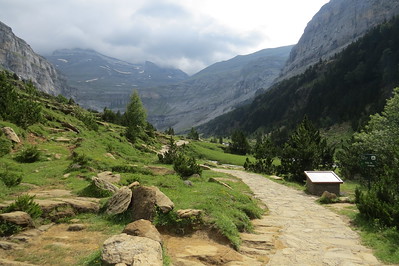
Pyrénées - Mont Perdu is a visually dramatic mountain landscape shaped by a pastoral transhumance system.
The protected area centered around the peak of Mont Perdu lies at the tectonic collision point of the Iberian and West European plates. The calcareous massif has several important geological, scenic and botanical values. A centuries-old transhumant system of grazing also continues within the area with frequent movement of herds across the French-Spanish border.
Community Perspective: On the Spanish side, the Ordesa Valley is the best suited for a visit and offers good hiking. The French side offers the Cirque de Gavarnie (you can even ski here!).
Residences of the Royal House of Savoy
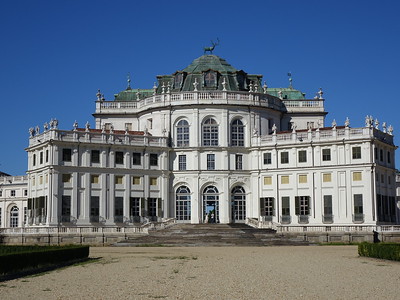
The Residences of the Royal House of Savoy represent the 17th and 18th-century building programme of this dynasty of absolute monarchs.
The Dukes of Savoy moved their court to Turin in 1562. Using their family wealth, successive dukes initiated construction and expansion programmes with an eye for town planning and overall cohesion. They left a testimony to Baroque art and architecture.
Community Perspective: Turin doesn’t get much praise (except for its Egyptian Museum and the Mole Antonelliana), and the interiors of many of these Savoy residences are nowadays filled with mildly interesting exhibits. Try to visit at least a building in Turin’s city centre (Palazzo Reale or Palazzo Madama) and one of the hunting residences in Piedmont (Palazzina di Caccia di Stupinigi is a convenient and beautiful choice).
Riga
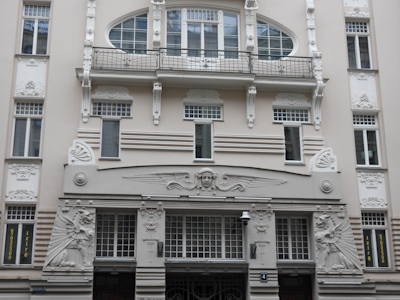
The Historic Centre of Riga comprises a medieval and later-period European urban landscape.
The city has the largest and finest collection of Art Nouveau buildings in the world, dating from 1896 -1913 when the city expanded and a housing boom followed. Also of note is the 19th-century wooden architecture. Riga has been highly influential in the Baltic region in architecture, monumental sculpture and garden design.
Community Perspective: While the medieval Old Town is pleasant enough, the real outstanding parts of Riga are the Art Nouveau treats concentrated in Elizabetes iela, Alberta iela and Strelnieku iela in the new town, culminating in the small and pleasant Art Nouveau museum. The 19th-century wooden buildings lie quite a distance away but are well worth the effort to see yet another district of Riga that is not so touristy.
Rohtas Fort
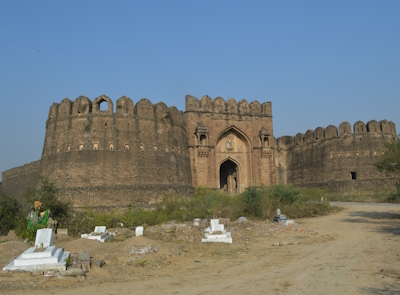
Rohtas Fort is an example of early Muslim military architecture in central and south Asia which influenced later Mughal architecture.
The garrison with massive walls was built in 1541 and blended architectural traditions from Turkey (to withstand gunpowder and cannon) and the Indian sub-continent. It includes walls, bastions, gates, a small mosque and a haveli (private mansion). Some of the buildings are decorated with relief carvings, calligraphic inscriptions and glazed tiles.
Community Perspective: A site much-loved by the locals. Solivagant’s visit in 2013 was limited due to security concerns, but based on research he answers the question “How special is it?”. Michael was assigned his own security detail in 2017. A.M.K. had a more full on-site experience in 2015: “Impressive. Big. Old. Scary”, and Els had a comprehensive visit in 2023.
Royal Palace at Caserta
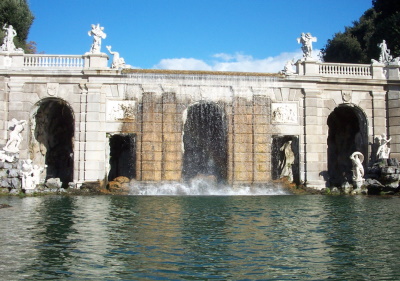
The 18th-Century Royal Palace at Caserta, with the Park, the Aqueduct of Vanvitelli, and the San Leucio Complex stands out for its adaption to the surrounding landscape and integration of already existing elements.
The sumptuous palace was commissioned by King Charles of Bourbon in the second half of the 18th century. It was surrounded by a planned complex of gardens and associated buildings. The estate also included the industrial complex in the hunting lodge Belvedere, dedicated to the production of silk, which included housing for workers.
Community Perspective: The water gardens are the major attraction here. The highlight of the palace interior is the magnificent Teatro di Corte.
San Pedro de la Roca Castle
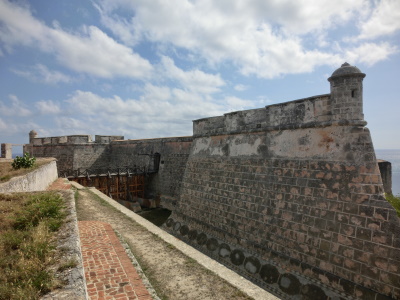
San Pedro de la Roca Castle, Santiago de Cuba, is considered the best preserved and most complete example of Spanish-American military architecture.
The castle and associated batteries protected the canal that leads up to the harbour of Santiago. It was designed by the Italian Giovanni Battista Antonelli in the Renaissance style. Built on a promontory with steep cliffs, a series of stairways connect the various levels. The fortress has been damaged and rebuilt several times after earthquakes and piracy attacks.
Community Perspective: locally known as El Morro, it is a pleasant excursion from Santiago. It can be reached on public transport via a local bus/boat combi, as described by Iain.
São Luis
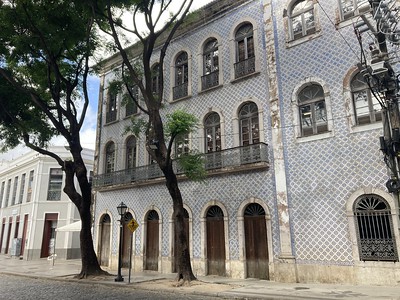
The Historic Centre of São Luis is an outstanding example of colonial Portuguese architecture in Latin America.
After a short period of occupation by the French, the Portuguese developed this city according to an urban plan dating from 1615. The city was further expanded in the 18th, 19th and 20th centuries, using an architecture that fitted the local climatic conditions. The centre includes public buildings, sumptuous manor houses, marble multi-storey houses and small houses decorated with azulejos.
Community Perspective: São Luis is the state capital of Maranhão, and is located quite far from other places of interest in the far north of Brazil (Lençóis Maranhenses National Park is the exception). Explore the city center’s streets with its many monuments on foot and keep an eye out for Bumba Meu Boi groups performing in the evenings.
Su Nuraxi di Barumini
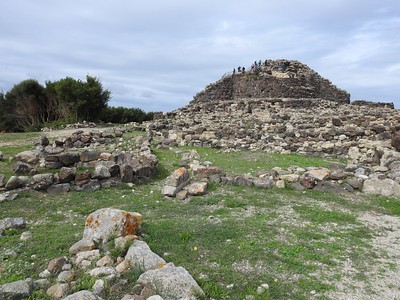
Su Nuraxi di Barumini is the most important Bronze Age defensive structure of Sardinia.
The prehistoric settlement was centered around a three-story, megalithic 'nuraghe' tower that was built around 1500 BCE. The Nuraghi, originally isolated towers in prominent settings, were built to house single families or clans, but evolved into a more complex settlement for social and defensive reasons.
Community Perspective: Don’t look at it only from afar, but take the guided visit that is included with the ticket, as it will take you in and on the structure and add a lot of background info to the ‘heap of stones’. Ilya has recommended a few other Nuraghi that are worth visiting.
Tallinn
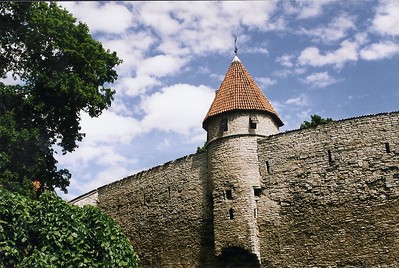
The Historic Centre (Old Town) of Tallinn is a late medieval urban landscape shaped by both the Teutonic Order and the Hanseatic League.
The Teutonic Knights built a castle here in the 13th century and turned it into one of the best fortified cities in Europe with 66 towers adorning the city wall. Its history as a Hanseatic trading town can still be seen in the wealth of its private and public buildings in the Lower Town.
Community Perspective: small, but one of Europe's best preserved medieval cities and almost completely devoid of modern buildings and real tourist traps.
The Sundarbans
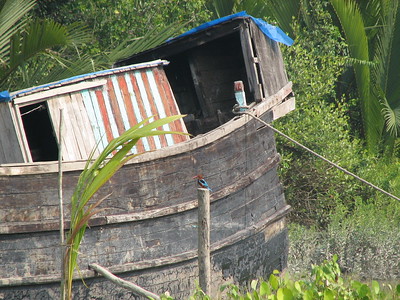
The Sundarbans are part of the world’s largest delta and hold among the largest remaining areas of mangroves in the world.
Its ever-changing landscape is fed by three major rivers and shaped by tidal shifts and monsoon rains. The site also has exceptional biodiversity, with a population of about 400 Bengali tigers (the highest density in the world) and over 300 species of birds.
Community Perspective: the park can be reached by boat from Mongla, there are day tours or multi-day trips to choose from. But discount the idea of seeing a tiger! The Indian Sundarbans are inscribed as a separate WHS and no international cooperation seems to exist to merge the two.
Torun
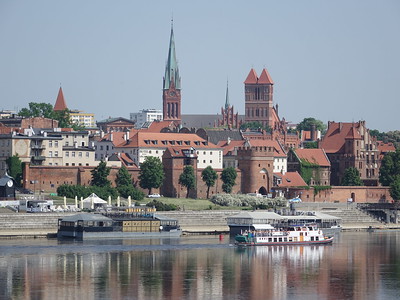
The Medieval Town of Torun is a well-preserved example of a European trading city from the Middle Ages.
The town was an important element in the network of the Hanseatic League in the territories ruled by the Teutonic Order. The Teutonic Castle remains as ruins, while the town center has been preserved in an authentic manner with fine medieval brick townhouses.
Community Perspective: a pleasant city, though some find it disappointing. The panoramic views from the opposite river ban showing the broad sweep of the town walls are especially charming. It still is more a destination for Polish school trips than for foreign tourists.
Trogir
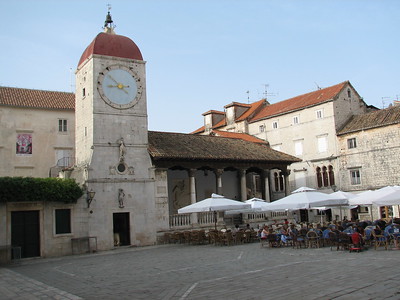
The Historic City of Trogir shows a medieval townscape on classical foundations that has survived almost intact into the 21st century.
Trogir was founded by Greek colonists in the 3rd century BCE on a little island. It flourished under the Romans and expanded its power significantly under Venetian rule (13th to 15th centuries). It has well-preserved its medieval urban fabric.
Community Perspective: “It's a charming complex of lanes and streets and a great place to wander.”, but it does not add much to the previous inscriptions of Dubrovnik and Split.
Villa Romana del Casale
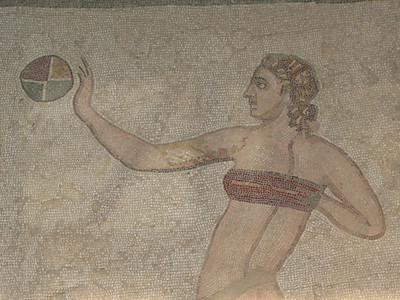
The Villa Romana del Casale is a Late Roman palatial residence renowned for its exceptional mosaics.
Located in rural Sicily, the luxury villa was the center of a huge agricultural estate. The floors of its 50 rooms are covered almost completely with well-preserved coloured mosaics. They depict hunting scenes, domestic scenes and flora and fauna. The mosaics probably were made by North African craftsmen.
Community Perspective: Mindboggling, as this is by far the largest set of Roman mosaics in the world. You view them by walking on raised walkways, which get crowded when the tour groups arrive. A visit may take 2 hours.
Volubilis
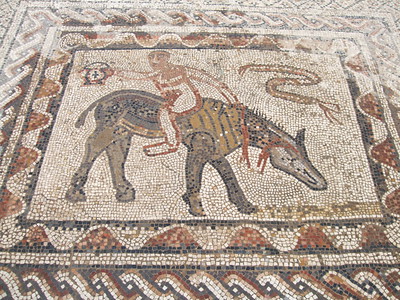
The Archaeological Site of Volubilis encompasses the remains of a Roman city that was the capital of 'Mauritania Tingitana'.
It has a favourable location, due to fertile grounds, for the cultivation of olives. In its heyday, the city probably had 20,000 inhabitants. Most of its large monuments such as the triumphal arch and capitol date from the 2nd and 3rd century CE. It is notable for its high number of mosaic floors. Volubilis also had a special place in the Islamic period via the founding of the dynasty of the Idrissids.
Community Perspective: The best things about Volubilis are its beautiful natural setting and its mosaics.
Willemstad
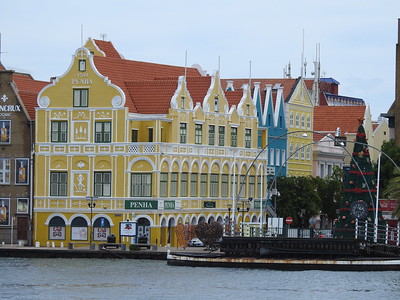
The Historic Area of Willemstad, Inner City and Harbour, Curaçao is a colonial urban landscape where Dutch-European architecture was combined with tropical models.
Willemstad was established as a trading post, port and settlement by the Dutch West India Company in the early 17th century. Most of its original urban structure remains, as do the colourful buildings from the 19th century. The designated area contains four historic districts around a natural harbour.
Community Perspective: Solivagant and Zoë in their reviews 8 years apart agreed on finding the city too commercialized while the architecture isn’t exactly outstanding. When you spend a bit more time, however, Willemstad does start to grow on you and Els even designed her own City Walk as a result. And Kyle discovered three museums of interest and a lively music scene.
Yuso and Suso Monasteries
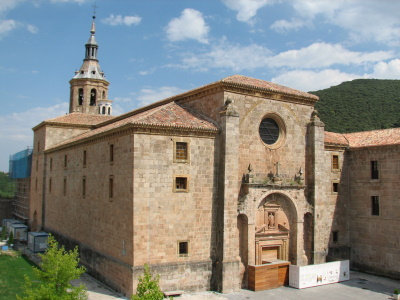
The San Millán Yuso and Suso Monasteries are early Christian monasteries known for their role in the development of the Spanish language.
The holy man Millán settled here in the 6th century, was joined by other eremitic monks and a Romanesque church was built on the spot. Suso is the oldest of the two monasteries, and it is the site where phrases in the Spanish and Basque languages were written for the first time. This codex was subsequently preserved in the 16th-century monastery library at Yuso.
Community Perspective: Expect to see many books on your guided tour of Yuso, while what’s left of Suso is one small church. A shuttle bus runs between the two monasteries. You can stay overnight at Yuso as well.